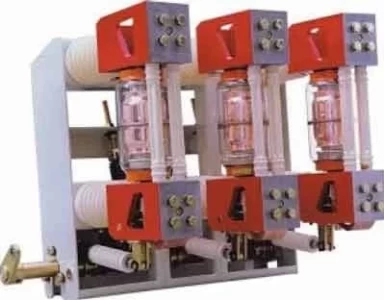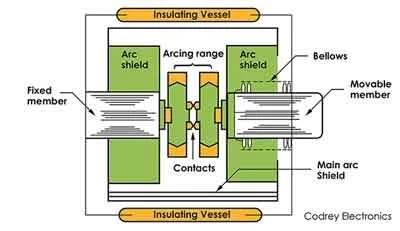Selectivity and Coordination in VCB Design
Selectivity and coordination in electrical systems are essential concepts that ensure reliable operation and protection of the network. These principles are particularly crucial when designing and implementing vacuum circuit breakers (VCBs) in electrical protection schemes. Selectivity ensures that only the faulty section of the network is isolated, minimizing disruption, while coordination guarantees that devices operate in a hierarchical manner to provide optimal protection.
One of the fundamental goals of electrical protection schemes is to isolate faults as close to their source as possible, minimizing disruption to the wider power system. This requires careful coordination among circuit breakers within the system. Selectivity, also termed discrimination, ensures that only the circuit breaker closest to the fault operates, preventing unnecessary outages of healthy circuits. Vacuum circuit breakers, with their unique characteristics, introduce specific challenges and considerations for achieving effective coordination.
Key Concepts: Time-Current Curves and Selectivity
Protection engineers rely on time-current curves (TCCs) to visualize a circuit breaker's operating characteristics. These curves show the time required for a breaker to trip at various levels of fault current. To achieve selectivity, the TCCs of upstream and downstream breakers must be coordinated such that the downstream breaker (nearest the fault) operates faster than the upstream device under all potential short circuit conditions.
Challenges in VCB Selectivity and Coordination
Complexity of Electrical Networks
Modern electrical networks are complex and interconnected, making selectivity and coordination challenging. VCBs must be designed to quickly distinguish between normal operational fluctuations and fault conditions. Achieving this level of discernment requires advanced sensing and control mechanisms to accurately identify and isolate faults, ensuring minimal impact on the rest of the network.
Integration with Existing Systems
Incorporating VCBs into existing electrical protection schemes often presents compatibility challenges. The design must account for the operational characteristics of existing circuit breakers and protection devices to ensure seamless coordination. This integration is critical to prevent miscoordination, which could lead to unnecessary power outages or equipment damage.
Technical Considerations in VCB Design
Breaking Capacity and Speed
VCBs are favored for their high breaking capacity and speed, essential for effective fault management. However, designing VCBs to maintain these characteristics while achieving selectivity and coordination requires precise engineering. The breaker must be capable of handling high fault currents without compromising its ability to coordinate with other protective devices.
Arc Quenching and Insulation
The vacuum interrupter technology in VCBs provides excellent arc quenching capabilities, which is vital for rapid fault clearance. However, ensuring that this feature works harmoniously with the system’s protective relay scheme is a technical challenge. The insulation properties of the VCB must also be maintained at a high level to prevent dielectric failures that could undermine the system’s reliability.
Performance and Reliability
Consistency Under Varying Conditions
VCBs must perform consistently under different operating conditions, including variations in load, temperature, and system voltage. Designing VCBs to maintain selectivity and coordination under such variable conditions demands rigorous testing and validation processes, ensuring that the breakers function correctly in all scenarios.
Long-Term Operational Stability
The long-term reliability of VCBs is paramount, as any degradation in performance over time can affect selectivity and coordination. Manufacturers must use high-quality materials and robust design principles to ensure that VCBs remain reliable and effective throughout their operational life.
Conclusion: Balancing Act in VCB Design
Achieving selectivity and coordination in the design of vacuum circuit breakers is a complex but critical endeavor in modern electrical protection schemes. Engineers and designers must navigate the intricate balance between breaking capacity, speed, and integration with existing systems, all while ensuring the VCB operates reliably under varied conditions. The effective design of VCBs not only enhances the operational efficiency and safety of electrical networks but also ensures that power distribution remains stable and secure, highlighting the essential role of selectivity and coordination in electrical protection.
Engineers must carefully consider the unique operating characteristics of vacuum circuit breakers to achieve effective selectivity and coordination in electrical protection systems. Utilizing current limiting designs, advanced trip units, simulation software, and meticulous system analysis can overcome coordination challenges. This approach ensures reliable fault isolation while maximizing power system reliability and protecting equipment from damage.




